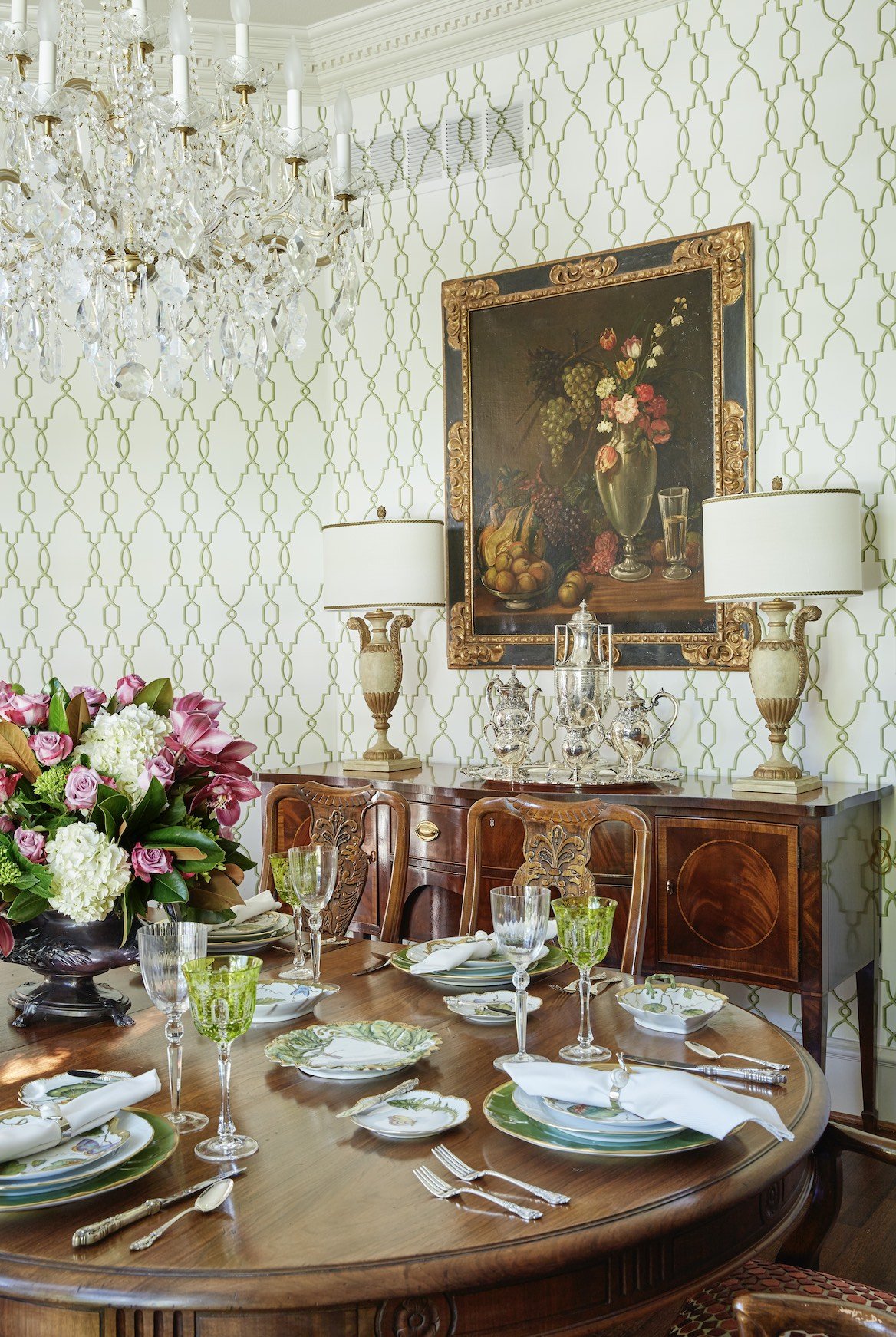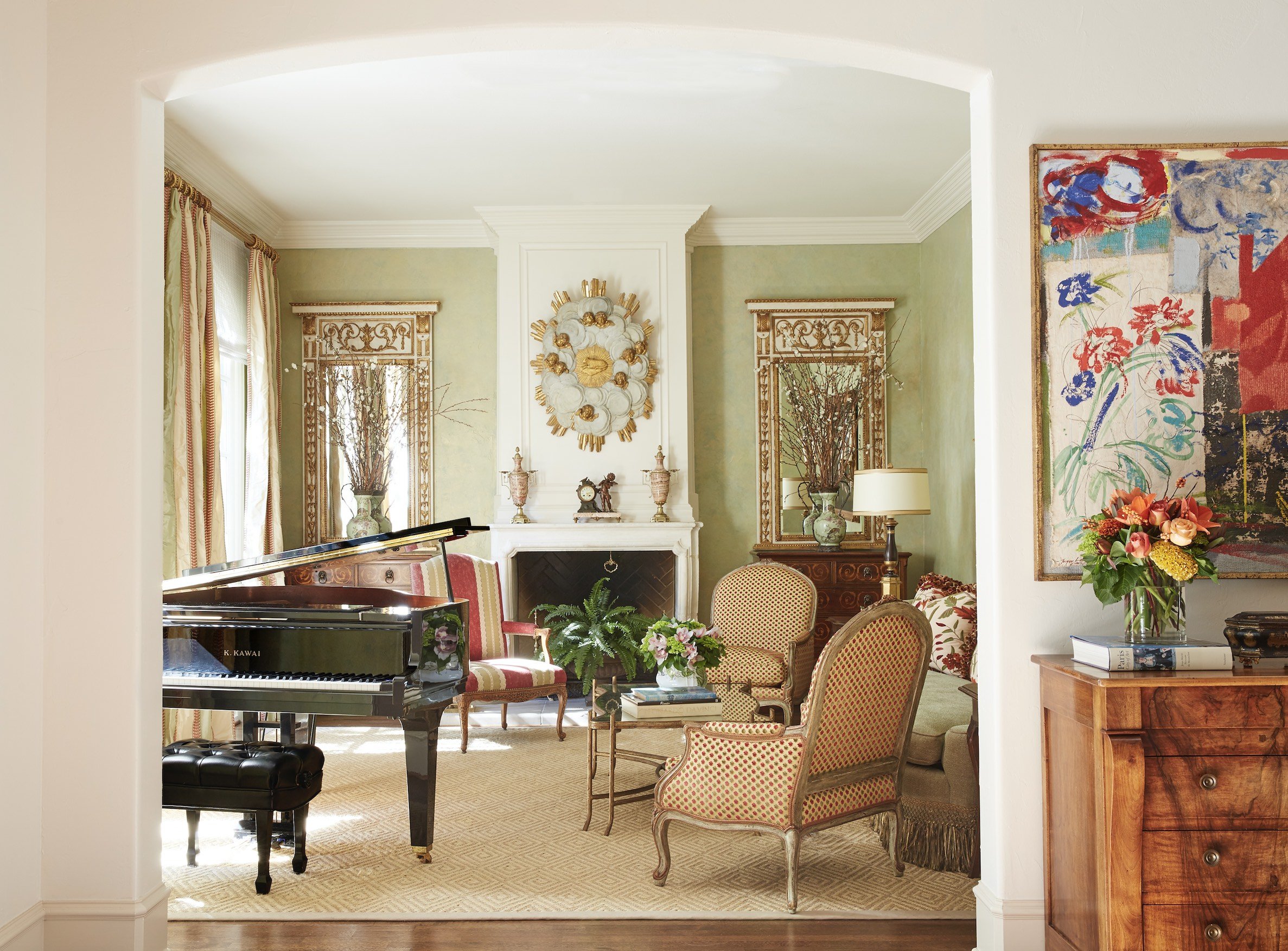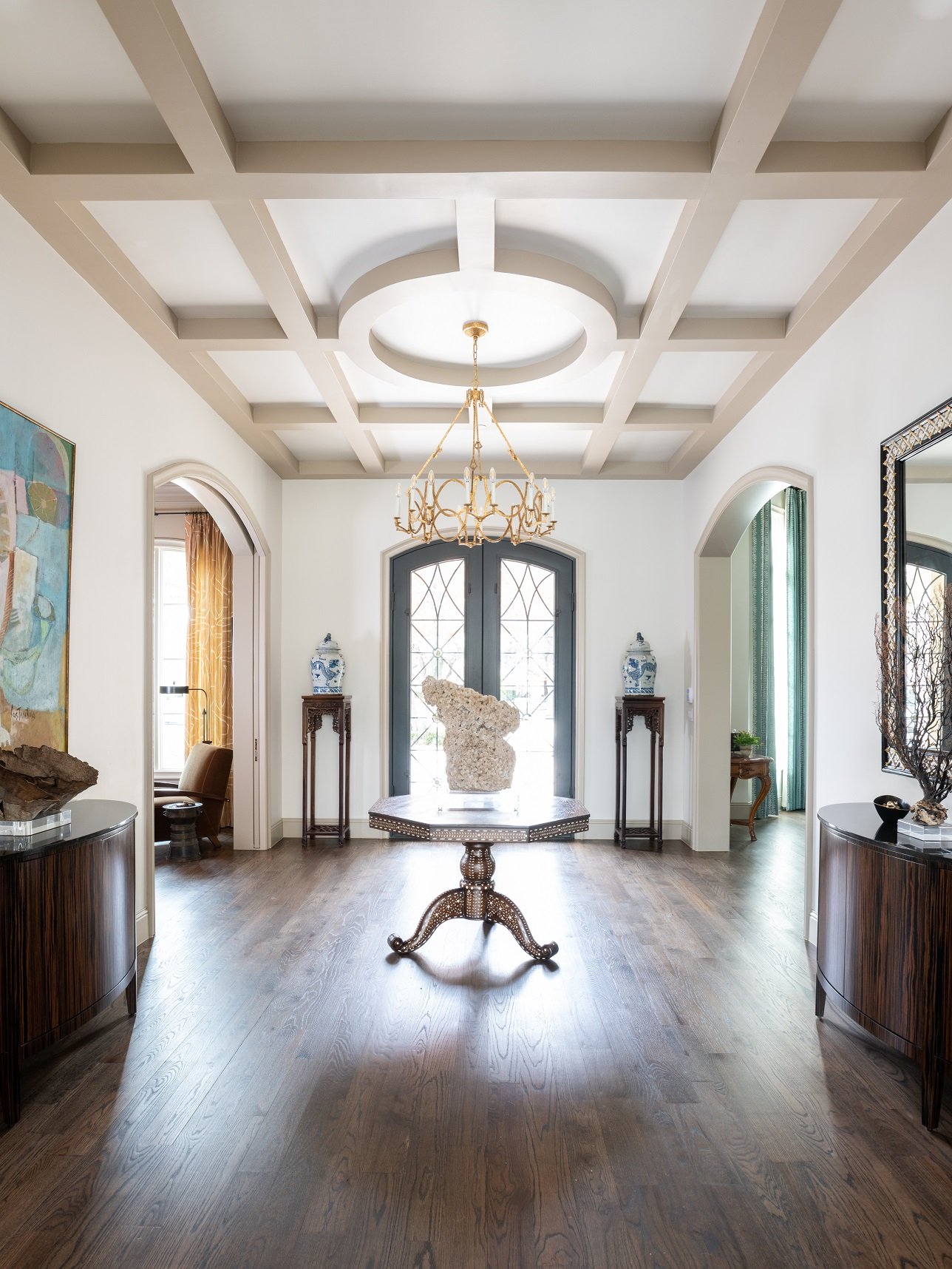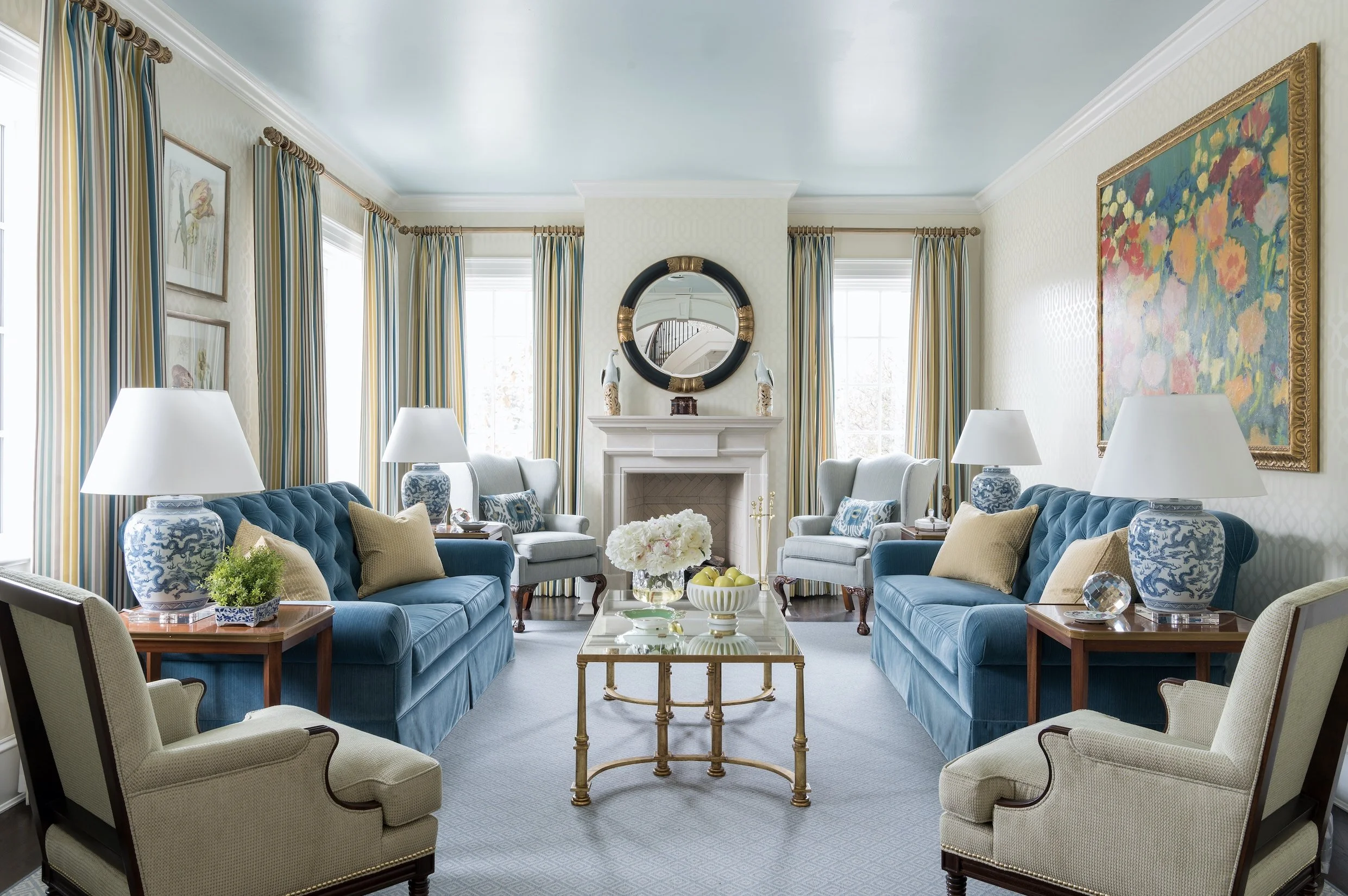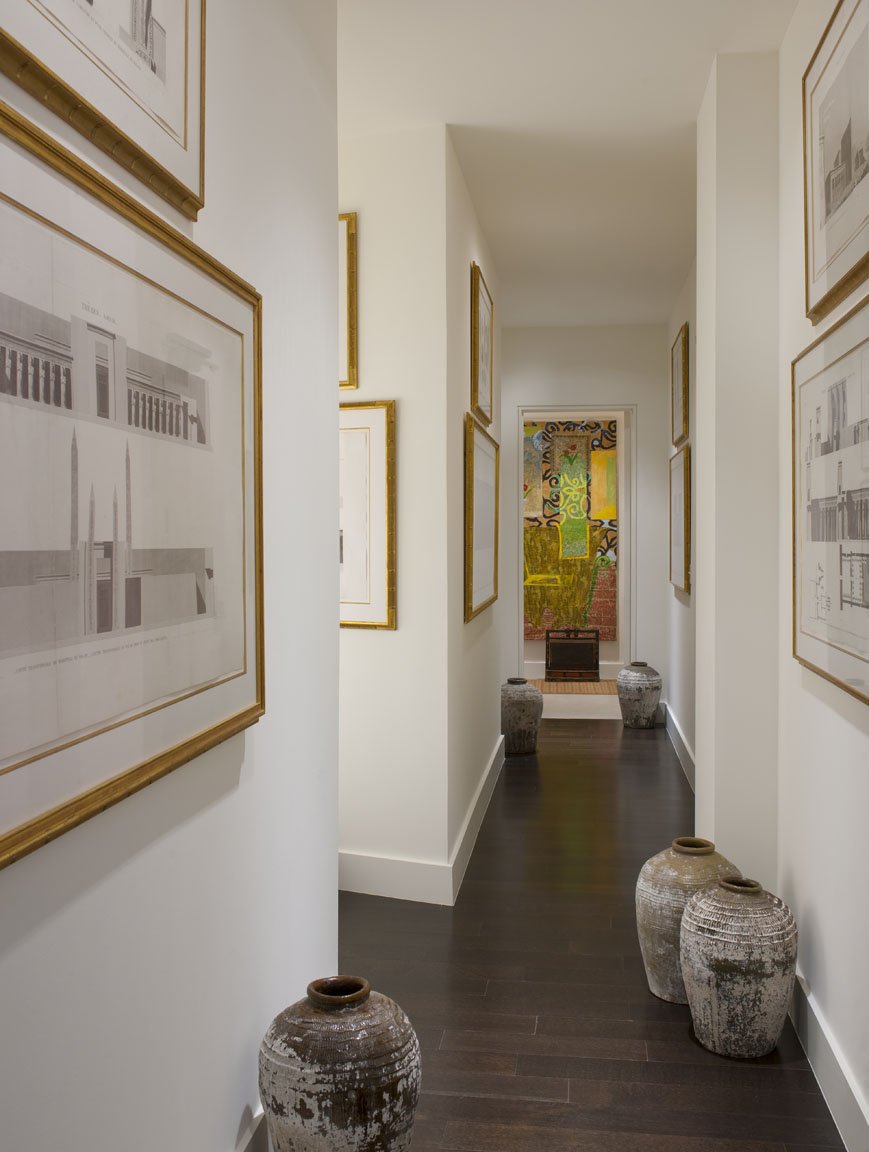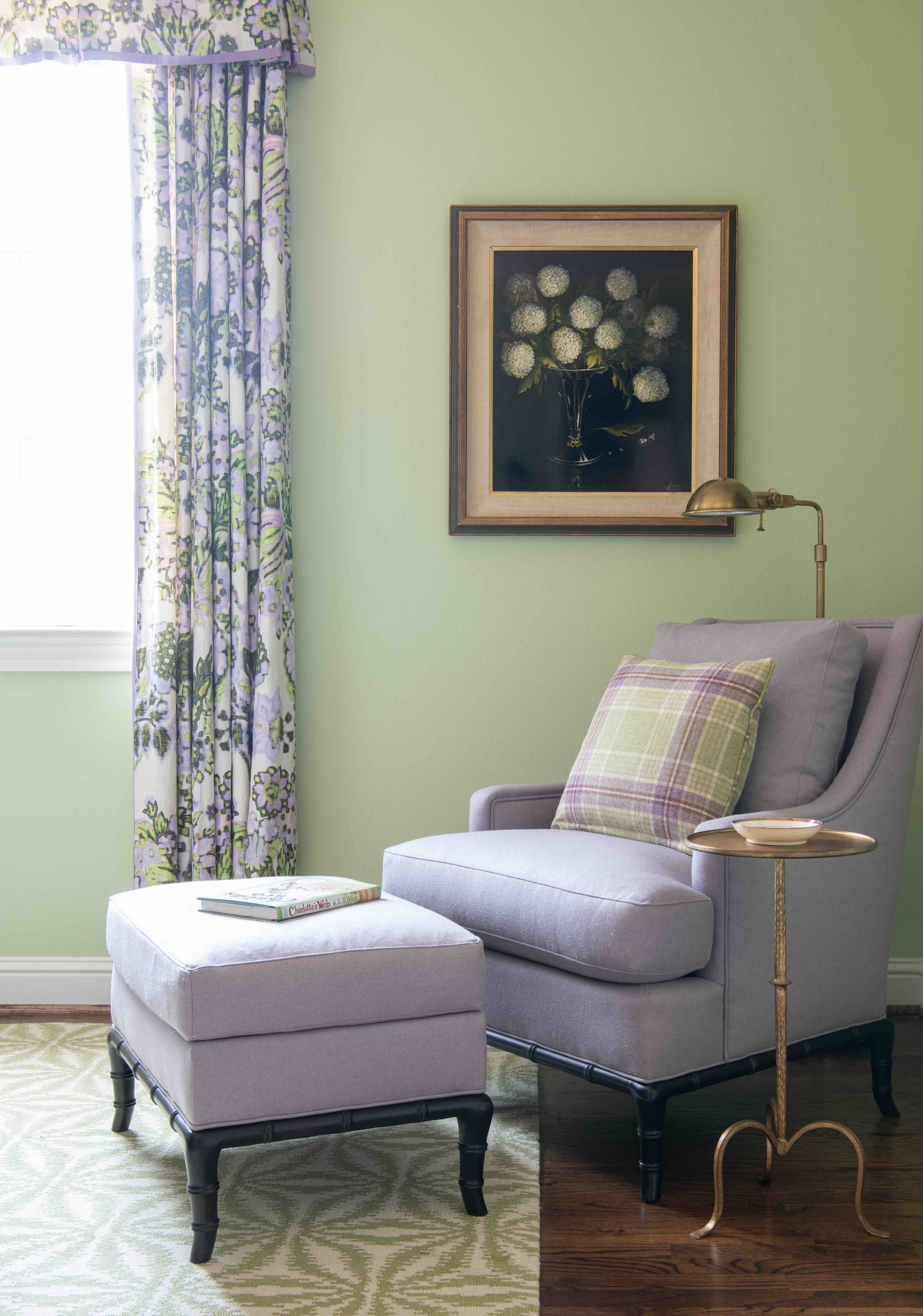This dining room features dentil crown molding along the ceiling. We went with a clean, elegant, geometric wallpaper pattern that wouldn’t distract from the home’s architectural details.
Period homes (generally defined as any home built before WWI) tend to have high ceilings, beautiful detailing, and architectural features you don’t often see in new homes. For many homebuyers, the creaks, the cracks, and the repair costs of a period home are well worth it.
You might wonder how an interior designer like myself would approach a historic property. In my opinion, the architecture should tell you the design direction that you go, and the furnishings should reflect the period of the house. I personally think it’s kind of disturbing to obliterate the interior and redecorate in a minimalist style.
Of course, there’s no need to turn your house into a museum, either. Here are some tips for decorating a period home in a way that’s sympathetic to the house’s history, but still looks current:
1. Choose Fresh Colors
Start by doing research on how homes in the period were originally decorated, then pick and choose the elements that look the most timeless. As with any home, it’s better to make a period home as timeless as possible. After all, it’s expensive to do a home: if you only follow the latest trends, in ten years, those trends are gone and we’re all off to something else.
Don’t be afraid to use soft, contemporary paint colors in a Georgian, Federal, or Neoclassical house. If you use saturated wall paint colors, keep the period detailing (such as the cornicing) in more understated tones for contrast. Keep in mind that if your home is in a historic part of Dallas like Swiss Avenue, Hollywood Heights, or Munger Place, you may need to use a traditional color for the exterior.
Patterned wallpaper is a luxurious touch, but choose a print with more modern and understated colors to keep your space from looking too dated. I suggest hanging mirrors instead of art over wallpaper because their simplicity gives the eye a place to rest.
Light and pastel colors, like the pinks that we used in this Park Cities English cottage, can help a traditionally decorated room feel fresh.
2. Highlight Traditional Architectural Features
Sadly, many period homes have had their original sash windows, fireplaces, molding, ceiling medallions, and baseboards ripped out and replaced with cheaper materials. Regardless of whether or not original fireplaces are still in working order, they are part of the charm of the home and should be celebrated.
Instead of replacing sash windows, consider repairing them, waterproofing them, or even upgrading them with double glazing. The wall around a stained-glass window should ideally be painted white or another neutral color to let the colors of the glass stand out.
If the original wood flooring is heavily worn down, consult a renovation expert before tearing it out. It may be possible to patch or repair it. I would also advise against changing the detailing in the house, and instead restore it by repainting it.
You can create an interesting contrast with original molding and ornate ceilings by hanging contemporary light fixtures. If you want to keep any original light fixtures, such as sconces, you can always have them rewired.
3. Play to Your Period House’s Strengths
One of the advantages of period homes are the high ceilings. You will probably want a large lighting fixture, such as a chandelier, to take advantage of the extra ceiling height. On the other hand, one of the downsides to period homes is that they sometimes have dark, narrow hallways. Hang mirrors, which reflect more light into the space, or add sconces in your hallways. High gloss paint can also be a good choice for brightening the walls of a period home. Just remember that your walls have to be extremely smooth, like glass, or a glossy paint finish will highlight every imperfection.
This formal living room we designed for a classically French home in University Park is traditional without being fussy. To the right is a piece of contemporary artwork that matches the color scheme of the room.
4. Find the Right Balance of Traditional and Contemporary
When it comes to furnishings, I think juxtaposing modern and traditional elements is best. If you’re using traditional art, mirrors, and wallpaper patterns, mix contemporary furniture into the room. The simple lines of the furniture will stand out beautifully against the traditional backdrop. Likewise, if you use a lot of antique furniture, you may want to use updated colors for the walls as well as contemporary art, which adds an element of surprise. Make sure to reupholster antique furniture using current fabrics.
An alternative to buying a period home is to work with a classically trained architect (like Larry Boerder, Robbie Fusch, or Stephen Zepeda, to name a few), who can build you a new home in a period style. If you already own a period home and need help deciding which parts should be kept as is, restored, or torn out, it might be time to consult an interior designer. A professional designer can help make sure that your renovation doesn’t go too far, and will be connected with lots of restoration experts who can breathe new life into the home. To schedule an appointment with Chambers Interiors, send an email to info@chambersinteriors.com or call our Dallas office at 214-651-7665.
RELATED ARTICLES:

